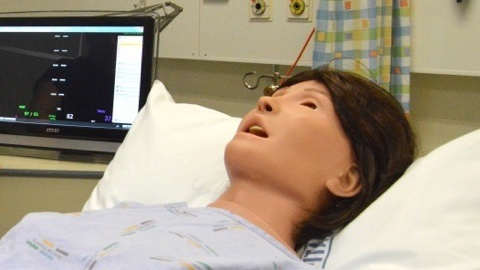
Waikato Hospital in New Zealand now can conduct childbirth training on a wireless birth simulator – named Lucy Sim – the second of its kind in the country. It will be used for midwifery training as well as the annual refresher courses each midwife must do as part of their continuing certification. Currently based in Waikato Hospital’s Delivery Suite and the Waikato Clinical Skills and Simulation Center at the hospital’s Hamilton campus, it is hoped that Lucy could be transported to rural areas for local training as well.
Lucy’s full name is CAE Lucina Childbirth Simulator and is produced by CAE Healthcare. It has ten pre-configured Simulated Clinical Experiences (SCE’s), from normal vaginal delivery to urgent and interventional birthing maneuvers. It can be given anesthetic, be resuscitated, and has heart rate, blood pressure and even makes sounds.
Recent training sessions included two assisted deliveries using forceps and ventouse, as well as an emergency caesarean, all relatively common obstetric possibilities but which carry risk.
“We’re using a highly advanced mannequin, a robot essentially, which is able to replicate the normal processes of delivery and also is able to suffer some of the crises that are common during the delivery of a baby,” said Dr Jeff Hoskins, Waikato Hospital consultant anesthetist and anesthetic simulation faculty organizer. “We’re using this robot so that we can get as robust a test as possible of all of our crisis response before we put patients back into that environment. Often when we train with simulation people can’t believe how realistic it is and it usually brings a lot of issues to the surface which we can debrief and teach better crisis response. There’s nothing like putting people in their real teams in their real clinical environment and having something very rare happen so that they can train to deal with it when it happens in a patient.”
